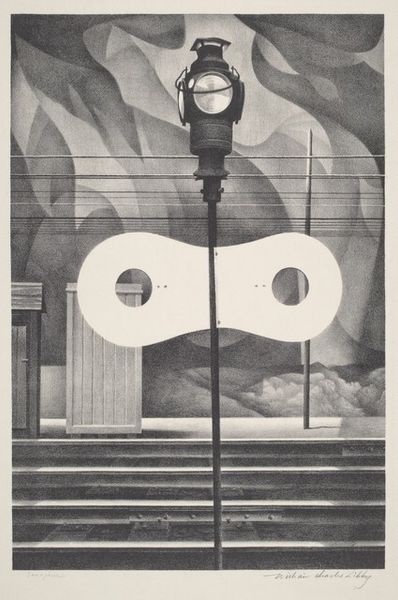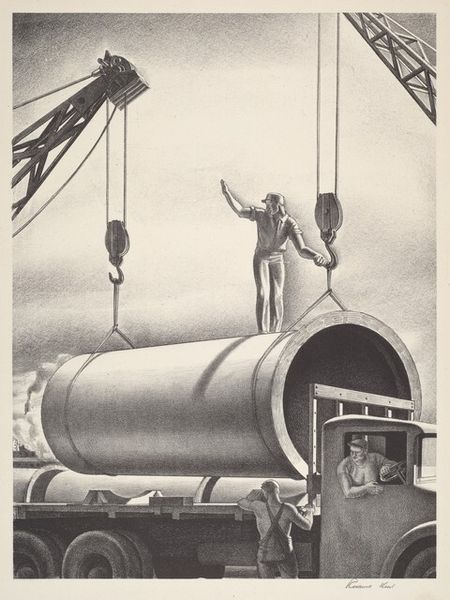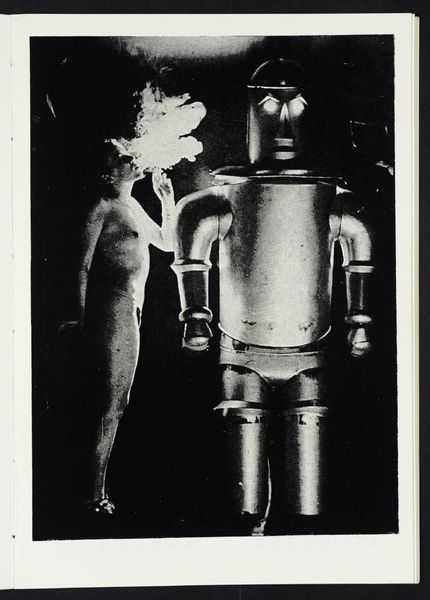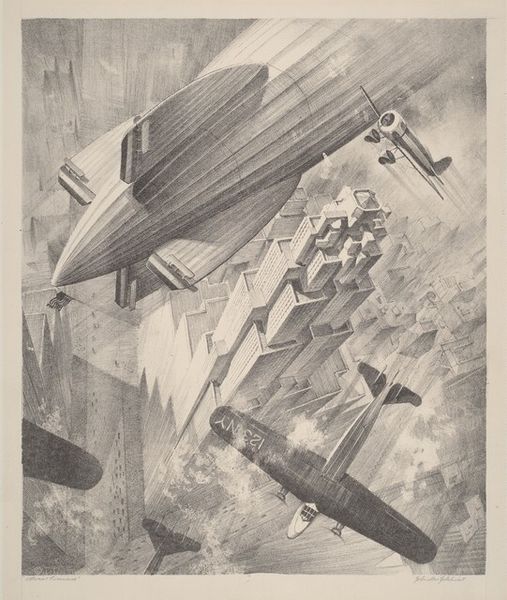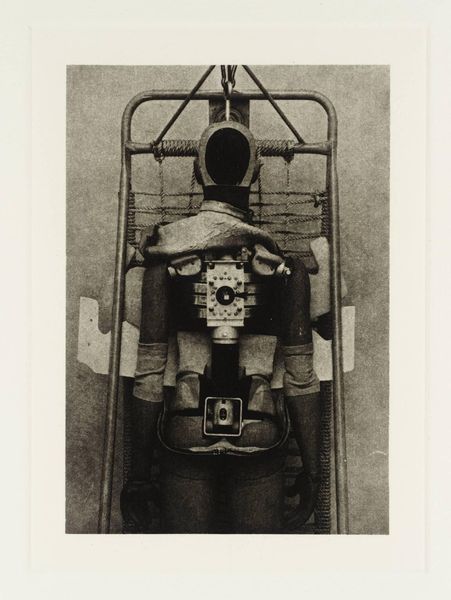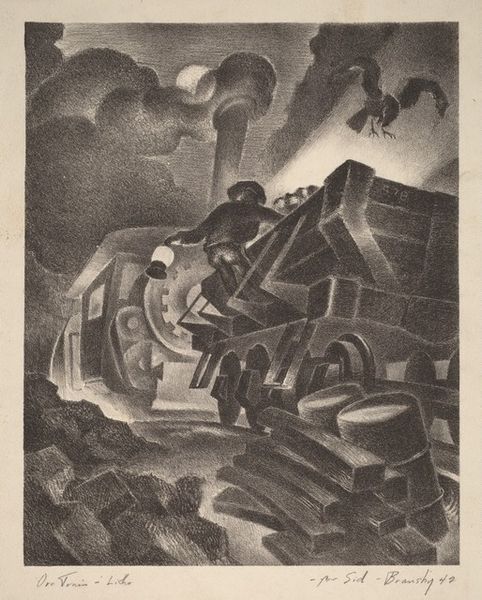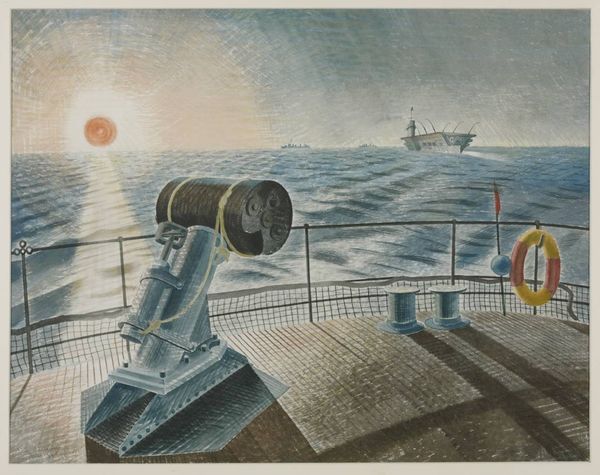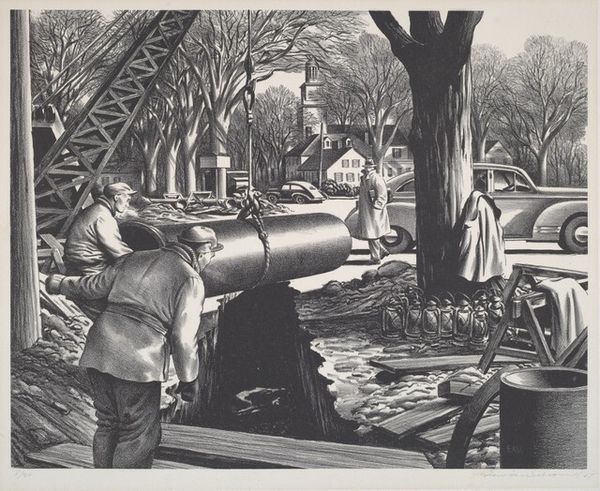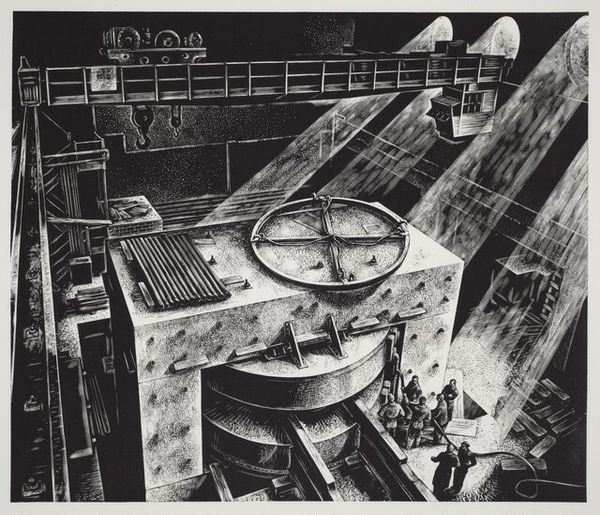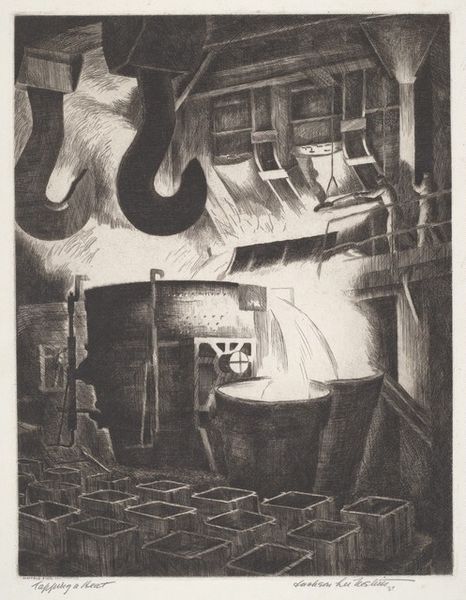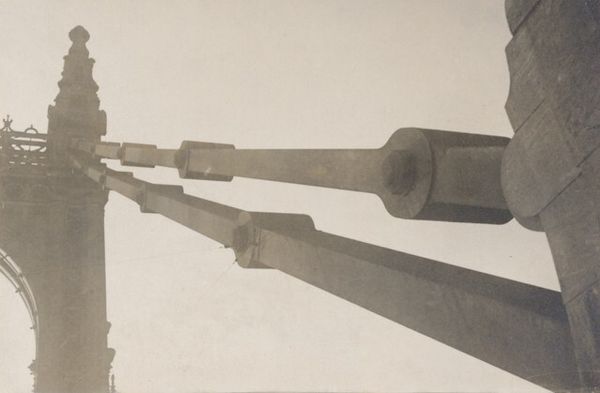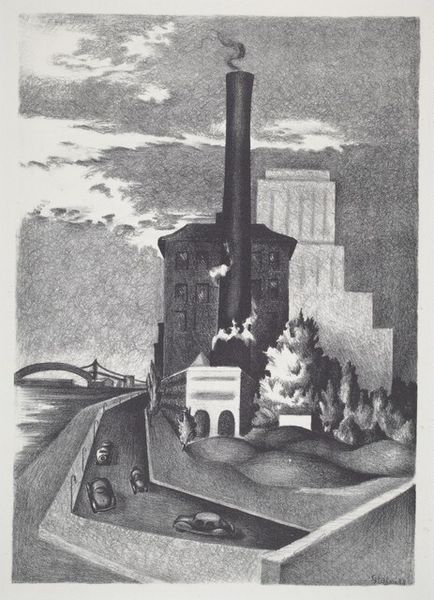
drawing, print, pencil
#
drawing
# print
#
landscape
#
pencil drawing
#
pencil
#
realism
Dimensions: image: 336 x 264 mm sheet: 399 x 329 mm
Copyright: National Gallery of Art: CC0 1.0
Curator: Let's consider William Charles Libby's pencil drawing "Junction (II)," dating from approximately 1945 to 1950. What's your initial impression? Editor: A sense of quiet, almost monumental stillness. The massive signal light dominates the landscape. Its size gives it this strange emotional weight. Curator: Indeed, the scale is striking. Given the period, the late 40s, immediately after World War II, it reads to me as a meditation on transition. Junctions, of course, symbolize choice and divergence. I see a societal leaning toward infrastructural growth. Editor: And it’s hard to ignore how the drawing is crafted. Libby's hyper-realism gives even the mundane objects on the wayside, the telephone wires and smaller railway lights a feeling of great importance and timelessness. But, consider, what is Libby trying to preserve here, and from what? Curator: Possibly the rapidly changing face of industrial America, representing anxieties concerning labor and automation following the war, and especially a longing for progress with many fearful consequences. This could also reflect an environmentalism movement; we can appreciate that such heavy industry had its critics. Editor: Certainly. I think this may also serve as a testament to an intersection, not just of the literal junction of the railroads, but a place that could symbolize a transition into modern American life with industry literally towering over the landscape. I find so many details which suggest something between pride and fear when facing that monumental technology. The almost anthropomorphic look to the big signal light in particular is unnerving. Curator: And consider the stylistic choice. The realistic rendering only amplifies this tension. It compels the viewer to reconcile an image with a scene they may very well have observed on a daily basis during the period with the emotional complexity embedded in this work. Editor: The drawing does a marvelous job of forcing a quiet contemplation on progress, whether we are considering that progress itself, or a change in direction for an entire society. I notice this picture feels just as pertinent now, thinking of today’s rapidly-advancing tech and society, as it surely did 70 years ago. Curator: A somber meditation on transition indeed.
Comments
No comments
Be the first to comment and join the conversation on the ultimate creative platform.
